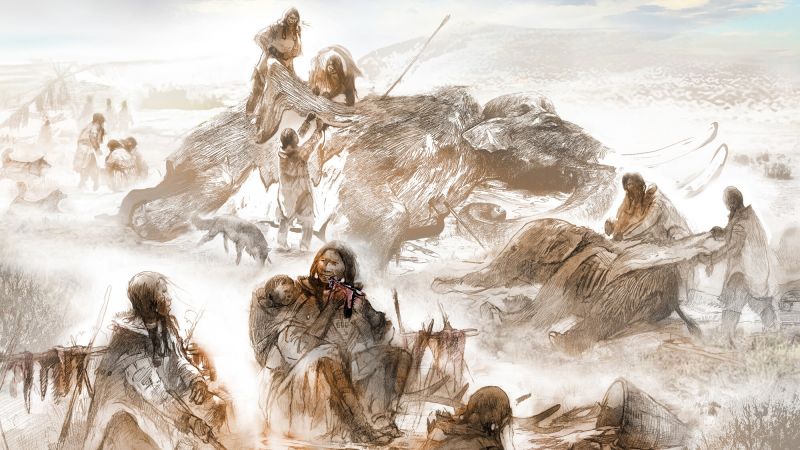A recent study has shed new light on the diet of the Clovis people, the ancient ancestors of Native Americans, who predominantly hunted and consumed large animals like mammoths during the last Ice Age. This research reveals crucial insights into the lifestyle and dietary habits of these early inhabitants of North America, offering a deeper understanding of their survival strategies and interactions with their environment.
The study was conducted by a team of scientists hailing from various universities in the United States and Canada. They analyzed the chemical signatures of food found in the remains of an 18-month-old boy, who was buried approximately 13,000 years ago near Wilsall, a small town in southwest Montana. This particular focus on human remains, specifically on the dietary evidence gleaned from this young child, helped illuminate the dietary choices of his mother, who was still nursing the child at the time of his death.
Through their analysis, the researchers concluded that the boy’s mother consumed a diet that was predominantly comprised of mammoths, which accounted for about 35% of her nutritional intake. This was complemented by other sources of meat such as elk, bison, and camels, while her intake of small mammals and plant life was minimal. Co-lead author James Chatters from McMaster University in Ontario articulated the significance of the findings, stating that they brought the Clovis people to life as individuals who could be related to in a more relational manner, as opposed to mere artifacts or remains strewn across the landscape.
The Clovis people are believed to have traversed large distances in pursuit of mammoth migration routes. This understanding explains how they could spread throughout North America and subsequently into South America over a relatively brief period. Their migrations underscore the adaptability and resourcefulness of these ancient hunters in response to the climatic and biological changes of their era.
While it had long been established that the Clovis people utilized weapons such as spear tips known as “Clovis points” to hunt large game, previous evidence of their diet relied on secondary clues, such as remains or the presence of specific tools discovered at archaeological sites. This led to extensive debates within the scientific community regarding the scope of their diet; some scholars argued for a diet centered on hunting large mammals, while others posited that they had a more varied intake that included smaller animals, plants, and fish.
Gary Haynes, an emeritus professor at the University of Nevada who was not part of the study, shared that the research effectively counters the argument for a diverse diet. This study holds significance as it provides direct evidence—rather than circumstantial—confirming that mammoths indeed played a role in the diet of Pleistocene human populations.
To derive this direct evidence, the researchers employed stable isotope analysis which allowed them to trace specific dietary intakes by examining isotopes of carbon and nitrogen within the remains. By comparing the isotopic signatures of the boy’s mother with those of various food items, they were able to gain significant insights into her predominant sources of nutrients. Notably, her diet displayed similarities to that of scimitar cats, which actively hunted mammoths.
The findings resonate with Shane Doyle, executive director of Yellowstone Peoples, who has been involved in liaising with Native American tribes throughout the research processes. According to Doyle, this study showcases the remarkable skills, determination, and resilience embodied by the Clovis people. Their capacity to hunt such massive creatures speaks volumes about their adaptability and survival tactics in the face of environmental challenges.
Moreover, the study raises critical questions about the impact of human hunting on mammoth populations. The overhunting of young mammoths, often seen in archaeological sites, suggests that human activities could have played a significant role in hastening the extinction of these majestic creatures. As articulated by Haynes, the removal of younger mammoths during a phase of critical climatic shifts likely contributed to the eventual demise of mammoths in North America.
The important conclusions of this research were made public with the publication of the study in the journal *Science Advances*, marking a pivotal moment in our understanding of ancient human diets and their ecological implications.



